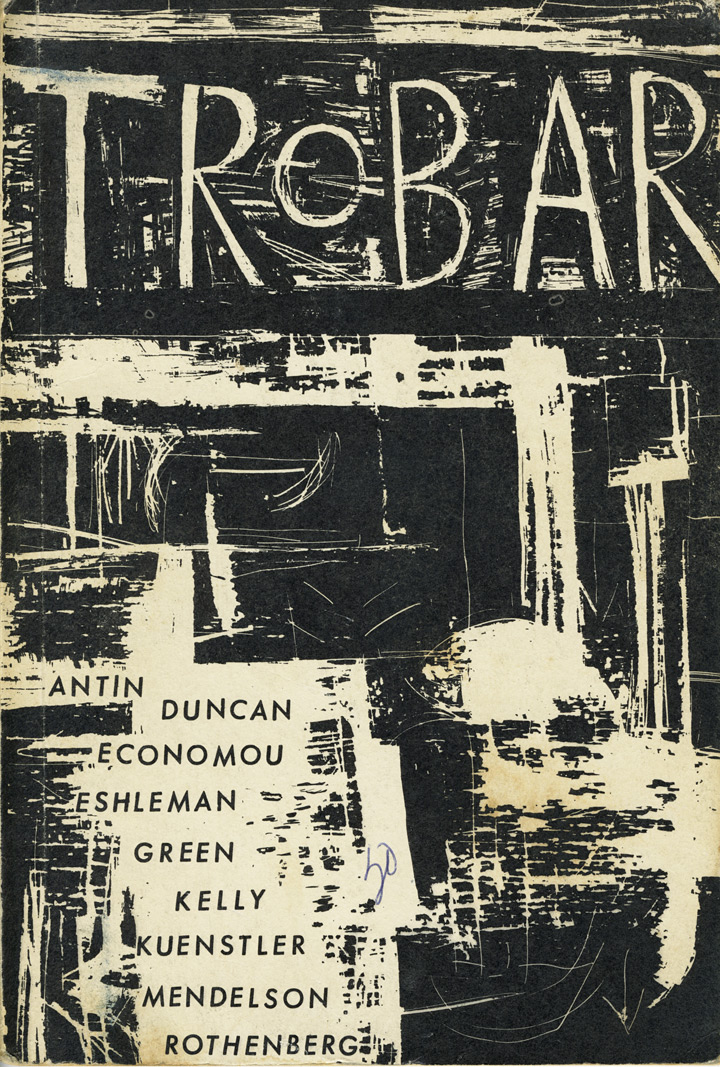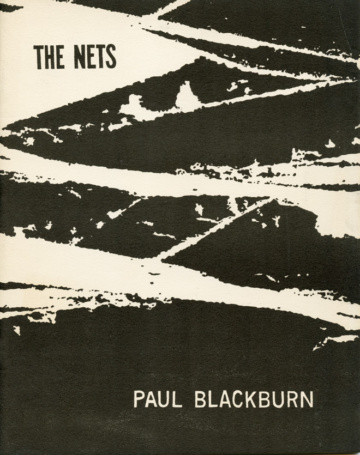Trobar, a magazine of the New American Poetry
George Economou, Joan Kelly,
and Robert Kelly
Brooklyn, New York
Nos. 1–5 (1960–64)
Trobar, a magazine of the New American Poetry 1 (1960).

Trobar magazine was published in Brooklyn in only five issues from 1960 to 1964, but it was tremendously influential in spreading knowledge about deep image poetry. Deep image poetry, according to Robert Kelly, is “poetry not necessarily dominated by the image, but in which it is the rhythm of the images which forms the dominant movement of the poem.” Of the three editors, Kelly has been the most tireless and enthusiastic poet, reader, and teacher, exerting a charismatic influence. He has published more than seventy-five volumes of poetry and prose (his first, Armed Descent, was published by Jerome Rothenberg’s Hawk’s Well Press) and was a founding editor of Chelsea Review and Matter and a contributing editor to Caterpillar, Alcheringa, Sulfur, Conjunctions, and Poetry International. and guest editor to Los (new series, no. 1, 1975).

Trobar 2 (1961). Cover design from Abbé Henri Breuil’s Les roches peintes du Tassili-n-Ajjer (1954).
Kelly coedited, with Paris Leary, the paperback A Controversy of Poets (1965), which was an entrant in the poetry anthology wars of the 1960s. Kelly’s essay “Notes on the Poetry of Deep Image,” which appears in Trobar 2, is a provocative statement about an important thread in modern poetry and is central to the concept of Trobar (the name refers to the Troubadour tradition in Provencal poetry). The press also issued a series of books, which included works by Rochelle Owens, Jerome Rothenberg, Paul Blackburn, and Louis Zukofsky.
“…we have to try to see the world in all its natural and contemporary detail as if no differences existed between the seer and the things he sees. To see in this way—through the self (emotively)—results in certain necessary changes on the material emerging in the poem: “a heightened sense of the emotional contours of objects (their dark qualities, or shadows); “their free re-association in a manner that would be impossible to descriptive or logical thought, but is here almost unavoidable; “the sense of these objects (and the poem itself) being informed with a heightened relevance, a quickened sense of life; “the recognition of the poem as a natural structure arising at once from the act of emotive vision.”
— Jerome Rothenberg, from “Why Deep Image?” in Trobar 3 (1962)

Paul Blackburn, The Nets (1961). Cover by Michelle Stuart.
Trobar books include
Blackburn, Paul. The Nets. 1961. Trobar Books [2]. Cover by Michelle Stuart.
Eshleman, Clayton. Mexico & North. 1962. Distributed by Trobar Books.
Kelly, Robert. Round Dances. 1964. [No number, 5?]. Drawings by Josie Rosenfeld.
Owens, Rochelle. Not Be Essence That Cannot Be. 1961. Trobar Books 1.
Rothenberg, Jerome. The Seven Hells of the Jigoku Yoshi. 1962. Trobar Books 3.
Zukofsky, Louis. I’s (pronounced eyes). 1963. Trobar Books 4.
